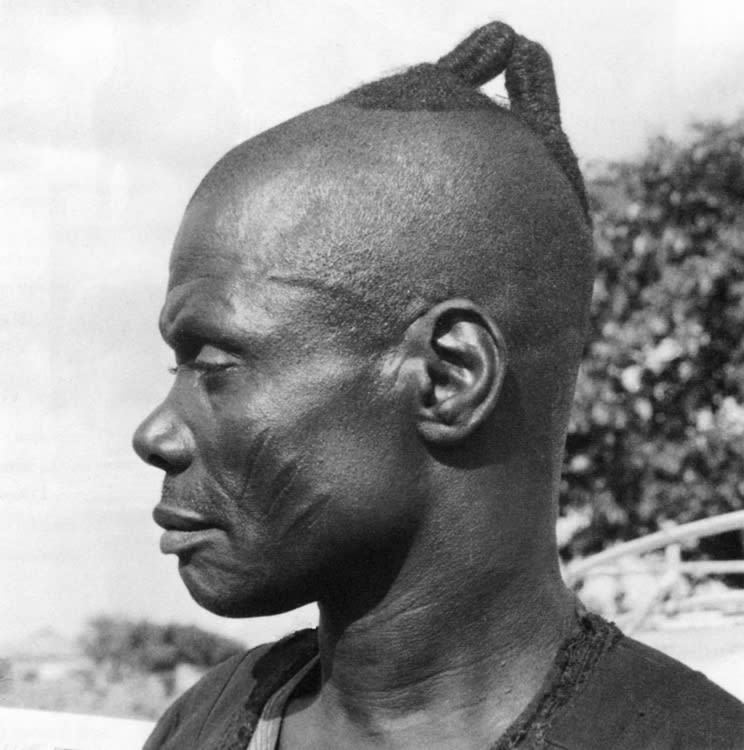
William Fagg took the above portrait in Shaki, the most Northern city of the Yoruba region, in 1959. Along with Ife, Oshogbo and Ede, Shaki is one of the oldest Yoruba settlements, having been founded in the 15th century by the legendary Yoruba king Ofiran. Next to the clear presence of the three typical lineage scarifications (ila) on the man’s cheeks, is the special hair-do, made up of two rising hair braids connected at the top. Among the Yoruba, persons with privileged roles, such as a king’s messenger (are or ilari) had their heads shaved. The remaining hair was fashioned in a distinctive way in order to identify the person’s powerful position.
One of my favorite pair of ere ibeji in the Lempertz sale earlier this week was a pair originating from Shaki. As the messenger on the field-photo above, the coiffure consists of two tall plaits joined at the tips. This hairstyle thus did not spring from the artist’s imagination, but was a realistic representation of an existing hairdo.

Note how the hair is dyed blue. The Yoruba considered blue a ‘cool’ color, thus here acting symbolically to ‘cool’ the head (and so, too the mind and temper) of the ibeji. The light-blue indigo, initially used on the figure’s coiffure, however, inevitably dulled over time, and often only traces remained visible. A more effective alternative to indigo came in the middle of the 19th century, namely Reckitt’s Blue. This was a domestic bleaching agent containing ultramarine, originally manufactured by Reckitt & Sons in England from 1840, and primarily sold as a textile whitener – although the Yoruba thus found a better use for it.

UPDATE: Elio Revera send me the below field-photo of two royal messengers in Ilari (Oyo), taken by Pierre Verger around 1950.
